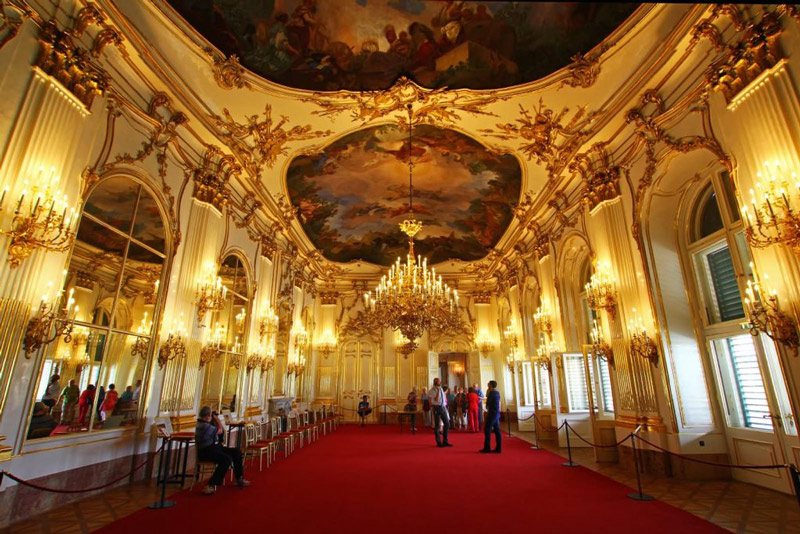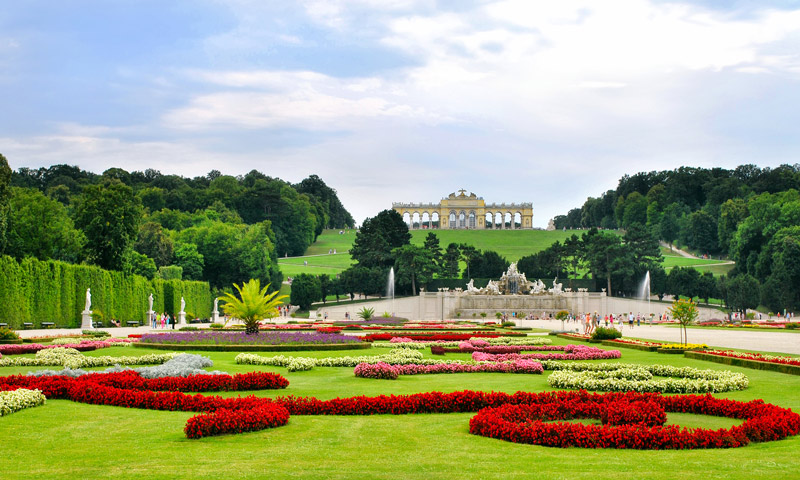Address and contacts
- Address: SHENBRUNN, Hitting 1130 Vein, Austria
Schönbrunn Palace Complex in Vienna
The former imperial residence of the ruling Habsburg dynasty includes a palace and a huge park, which includes a botanical garden, a palm pavilion, the oldest zoo in Europe and much more. The palace was built in 1713 as a summer imperial residence, but was repeatedly rebuilt. Its best halls belong to the period of the reign of Empress Maria Teresa. Of the more than 1000 halls for tourists, about 40 are opened.
History of the Schönbrunn Palace
Back in the early 1300s, Katterburg was on the site of the palace-the possession of the monastery Klostasternurg. It so happened that the owners of the area were constantly changing. This continued until 1569, while the ruler Maximilian II made the land the property of the Habsburgs. A park was broken here and a small building was built.
For a long time, the construction was used as a hunting castle. However, everything changed in 1642, when 5 years after the death of Emperor Ferdinand II, his widow Eleanor built on this place a palace called Shenbrunn. Translated into Russian, the name means “beautiful spring.” A pure source opened by Kaiser Matias flows next to the castle. He gave the name of the new residence.
Architectural appearance
The appearance of the palace is impressive. The first thing the visitor sees is an impressive forged bars with obelisks at the entrance. Fountains also placed on both sides of the gate are also designed. Sculptures located on the left fountain symbolize the largest Austrian reservoirs: Danube, TIN and ENS. The monuments on the right are devoted to Galicia and Transylvania.
The internal premises of the palace are distinguished by style unity, but famous artists and masters of applied art created here. Particular attention is deserved: a large gallery where public receptions and banquets were held; Blue Chinese Salon in the Rococo style; Cabinet of Maria Teresa, decorated with copies of Dutch and German paintings; Lacquer cabinet decorated with vast -style lacquers.

Exhibition of carriages
In one of the lateral outbuilders of the Schönbrunn Palace, a carriage museum was located. The collection has more than 60 carriages, starting from the 17th century, for riding, harnesses, saddles, boats and paintings with images of horses and carriages. The 4-ton imperial carriage is especially noteworthy. During coronations, eight horses were carried at once.
Park of the Palace Schönbrunn
The park, starting from the building of the palace, smoothly goes into the climb to the hill, on the top of which the Gloriett pavilion is located. From here opens a magnificent view of Vienna. In the numerous pavilions of the park, you can find not only the usual storages of ancient relics, but also the legendary glass house of palm trees, as well as the zoo.
In the summer, in the palace you can visit your theater, offering the audience a variety of concerts and performances. Museum lovers should go to the park where


